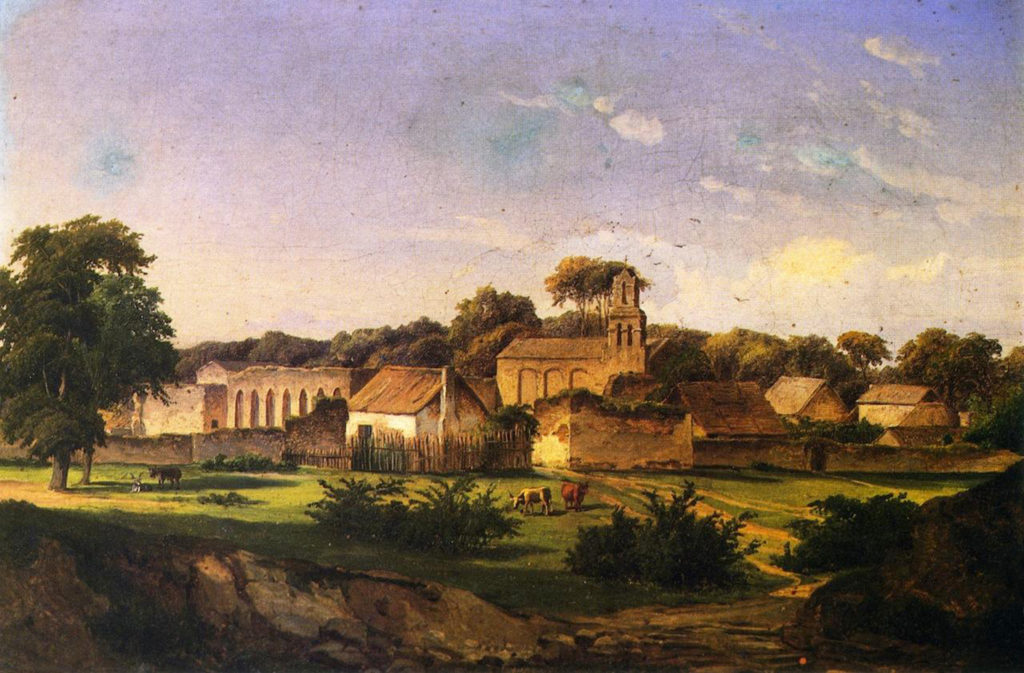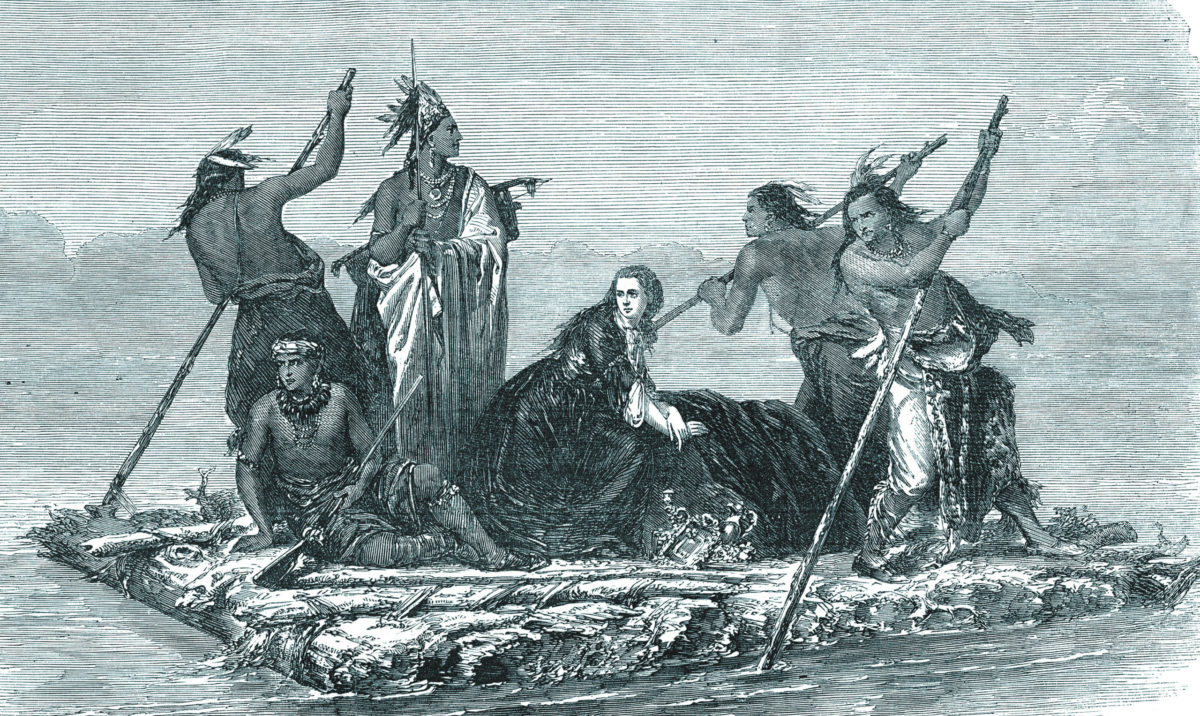By life’s end Sarah Creath McSherry Hibbins Stinnett Howard could claim five surnames, one from her birth and one each from her four husbands. Along the way she had suffered more hardship on the Texas frontier than most pioneers, man or woman. Described in her youth as “a beautiful blonde…graceful in manner and pure of heart,” she had watched as two of her husbands, her only brother and one of her children were killed in front of her and had lost a third husband in mysterious circumstances. She herself had been captured by Comanches and escaped, making a perilous and painful journey before stumbling bruised and bleeding into a camp of Texas Rangers.
But she had survived.
Originally from the vicinity of Brownsville, Ill., where she was born Sarah Creath around 1810, Sarah married John McSherry while still a teenager. In 1828 the newlyweds moved south, settling in DeWitt’s Colony, along the Guadalupe River in south Texas, then a Mexican province. In 1829 a son was born to them. Then tragedy struck.
On an otherwise pleasant day that year, around noon, John left the cabin to fetch water from a nearby spring. Moments later Sarah heard yelling and opened the cabin door to the sight of Indians killing and scalping her husband. She quickly slammed and barred the door, locking herself and the baby inside, then grabbed John’s rifle, determined to defend herself and the baby as best she could. While she waited in the still cabin, the Indians slipped away as quietly as they had come.
Around twilight a man named John McCrabb happened by. Seeing what had happened and hearing Sarah’s story, he placed her and the baby on his horse and led them through the darkness to the home of the McSherrys’ nearest neighbors, Andrew Lockhart and family, some 10 miles upriver. Mother and child remained with the Lockharts several months until Sarah remarried, to a well-off Guadalupe Valley man named John Hibbins (also given as Hibbons or Hibben). In 1835, after having given birth to a second child, Sarah returned to Illinois with her two children to visit relatives. In early 1836 they returned to Texas by way of New Orleans, accompanied by Sarah’s only brother, George Creath. In February the four met up with John Hibbins at Columbia, Texas (present-day West Columbia) on the Brazos River, setting out from there by ox cart bound west for the Guadalupe Valley. They never made it. Fifteen miles from home, they were attacked by a band of 13 Comanches who killed Sarah’s husband and brother, took her and the children prisoner, and rode north.
“They traveled slowly up through the timbered country,” John Henry Brown wrote in his 1880 book Indian Wars and Pioneers of Texas, “securely tying Mrs. Hibbins at night and lying encircled around her.”The next day one warrior, weary of listening to the cries of Sarah’s infant, killed it by smashing its head against a tree as Sarah helplessly watched. Days later the party crossed the Colorado River deep in Comancheria and relaxed the security in which they held their captives.
Sarah faced a crossroads. Though she realized there was a chance to escape, she knew she could not make it away safely with her young son, so she made the heartrending decision to leave him. Wrapping him in a buffalo robe, she quietly slipped out of the Indian camp and into the darkness.
GET HISTORY’S GREATEST TALES—RIGHT IN YOUR INBOX
Subscribe to our HistoryNet Now! newsletter for the best of the past, delivered every Monday and Thursday.
“Daylight found her but a short distance from camp, not over a mile or two,” Brown wrote, “and she secreted herself in a thicket from which she soon saw and heard the Indians in pursuit. The savages compelled the little boy to call aloud, ‘Mama! Mama!’ But she knew that her only hope for herself and child was in escape and remained silent.”
When Sarah was certain the Comanches had given up their search, she pressed on through the heavy brush and down the Colorado, eventually stumbling across a riverside cabin in which 18 Texas Rangers had just settled down to their evening meal. Though she’d walked only 10 miles, it had taken her 24 hours. “She was so torn with thorns and briars, so nearly without raiment and so bruised about the face that her condition was pitiable,” Brown wrote.
The Rangers, under the command of Captain John J. Tumlinson Jr., quickly saddled up and went after the Comanches. The next morning, after a brief but hard fight, they rescued Sarah’s child.

Sarah and son next went to live among the families Harrell and Hornsby, near the site of present-day Austin, and fled with them as the Mexican army that had taken the Alamo in March moved north. They eventually found refuge with former Dewitt’s Colony neighbor Claiborne Stinnett, and in the spring of 1837 Sarah and Claiborne married. In 1838 Stinnett was elected sheriff of Gonzales County. That fall the sheriff disappeared while returning north to Gonzales from Linnville, on Lavaca Bay. He was thought to have been killed, either by Indians or, as Brown believed, by two runaway slaves. Regardless, Sarah was again a widow.
By then, though still shy of 30 years old, she had been widowed three times and seen her brother, one child and two husbands killed before her eyes. On May 29, 1839, she married her fourth and final husband, Phillip Howard. In June 1840 the couple left the Guadalupe Valley and moved west to the San Juan Capistrano Mission south of San Antonio. On arrival they were subjected to an Indian raid, Sarah’s son barely escaping capture a second time. The Howards later moved farther down the San Antonio River to southern Goliad County. There they experienced more Indian raids and again fled, this time to the vicinity of present-day Hallettsville, in Lavaca County. Finally finding peace there, Sarah gave birth to three daughters, and her husband was named a county judge. In their later years the Howards moved once more, settling in Bosque County, where Sarah died on March 28, 1870, of natural causes. She had been with Phillip for more than half of her 60 years—her reward after long years of hardship.






